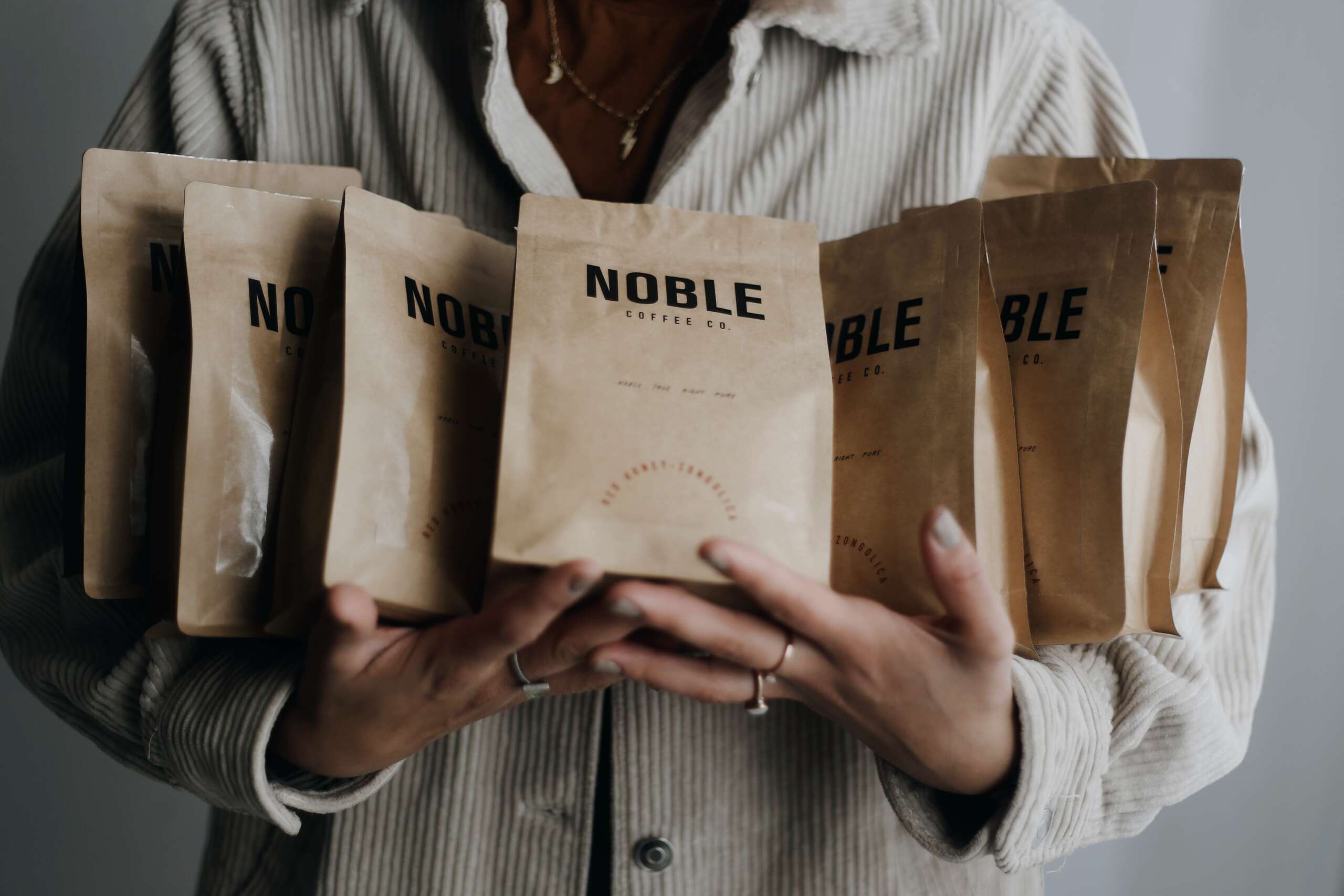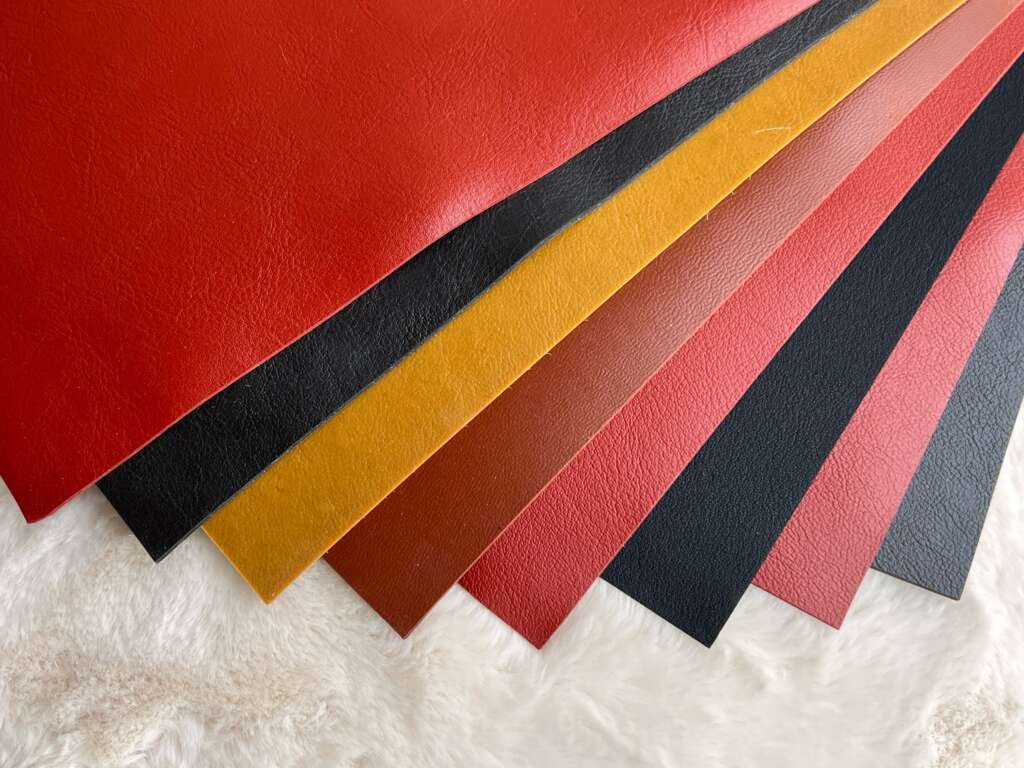The Best Packaging Solutions That Aren’t Plastic

Share This Article
From bioplastics to seaweed, the best non-plastic packaging solutions are biodegradable and endlessly recyclable!
| All products featured on The Wellness Feed are independently selected by our editors for their environmental and ethical impact. However, we may earn an affiliate commission when you buy something through our retail links. |
One surefire way to reduce our environmental footprint is to reduce buying single-use plastics. Many of us buy reusable water bottles instead of single-use plastic water bottles or invest in organic cotton clothing instead of plastic-based polyester. But when it comes to other products in our homes single-use plastic can still reign supreme. Think of your shampoos, household cleaners, food items, or even the tube of your favorite lipstick. Most likely these items are packaged in plastic. It’s durable, flexible, cheap, and a dominant material of choice for many brands’ packaging solutions. But it’s unrecyclable, can take hundreds of years to decompose, and leeches toxic chemicals into our water and soil resources. Approximately 36% of all plastics produced are used in packaging, including single-use plastic products for food and beverage containers, approximately 85% of which ends up in landfills or as unregulated waste. In 2018, an estimated 14.5 million tons of plastic packaging became trash.
As a solution to this plastic pollution crisis, companies are switching to packaging materials like aluminum, bio-plastics (plant-based plastic materials), glass, and paper. But with the resurgence of these old and new materials, sometimes it begs to question which is the most eco-friendly. The answer isn’t clear-cut. From glass to paper, each type of packaging material undergoes an intense production process that uses resources like water and minerals and emits greenhouse gases into the air. What is known for sure is that these materials use fewer resources compared to single-use plastic, decompose naturally, and in some cases can be endlessly recycled. There isn’t one perfect environmental solution, but there are better alternatives to plastic packaging that we as consumers can look for.
* Do you have a favorite brand that you think uses too many packaging materials? Use this email template to let them know that a little packaging goes a long way and that you’re a customer who is happy for them to use less.
Glass
Glass that you reuse or recycle- is a great circular packaging option. From bottles containing drinks to beauty products, glass bottles can be cleaned and reused or remade into something new instead of taking up space in landfills.
Environmental Impact: Glass is essentially sand that has to be melted down. During these processes greenhouse gases like carbon dioxide (CO2) and sulphur dioxide (SO2) are emitted into the environment. Not only that, but during the production process there is also the issue of water pollution.
Believe it or not, glass is not biodegradable. But, it is endlessly recyclable. Making new items from recycled glass can reduce air pollution by 20% and water pollution by 50%.
Aluminum & Steel
Aluminum and steel are heavily processed materials that rely on the extraction of raw materials. Bauxite, a clay-like rock is collected through open-pit mining. Once extracted it is then refined through multiple processes that involve chemicals, and an excessive amount of water and energy to finally turn into molten aluminum.
Environmental Impact: Using aluminum as a non-plastic packaging alternative makes sense. Yes, it drains resources like land, water, and energy. But it’s endlessly recyclable. It’s estimated that 75% of aluminum that has been produced in the U.S. is still being used today.
Plant-based
Often referred to as bio-plastics, plant-based packaging is biodegradable, dissoluble, compostable, and in some cases it’s even edible. Instead of relying on fossil fuels like traditional packaging, bioplastics use cellulose fibers or oils from plants to mimic plastic.
Environmental Impact: When it comes to sourcing raw materials for bioplastics, sugar and cornstarch are popular. Both undergo chemical processing where they are broken down until they become similar to traditional plastics. This does place a strain on the environment due to the impacts of agriculture and production. But, when compared to greenhouse gas emissions from traditional plastics, using bioplastics can reduce emissions by 25%.
Another consideration for the environmental impact of bioplastics is the end-of-life of an item. In order for bioplastics to be able to properly degrade, they must be recycled and discarded properly. Being mixed with other waste materials can result in them being thrown into landfills where a lack of oxygen discourages proper decomposition and instead releases greenhouse gases.
Seaweed
Seaweed is fast becoming a versatile material that can be spun into fibers for clothing, takeaway boxes, and even bioplastics. As a non-plastic packaging alternative, it is just as versatile as plastic and has similar water-resistant properties. But, seaweed packaging has the eco benefit of being recyclable, compostable, and biodegradable.
Environmental Impact: There are multiple benefits to seaweed. It can grow up to one meter per day. It decomposes naturally within 6 weeks. It doesn’t require industrial composting.
Paper
Paper and cardboard have become popular materials lately as non-plastic packaging materials. Think of your local grocery stores which may have replaced single-use plastic bags with recycled paper bags. Part of this change has to do with paper’s ability to be composted and recycled again and again as long as it hasn’t been degraded with hazardous waste or chemicals.
Environmental Impact: As we all know paper comes from a renewable resource- trees. But, with the average tree needing several years to grow to its full size, even projects that focus on replanting trees might not be able to offset the impact of deforestation from the paper industry. That’s why recycling paper plays such a big role in minimizing the impact of overusing the earth’s natural resources.
Recycling one ton of paper can save 7,000 gallons of water and reduce 1 ton of greenhouse gas emissions.















